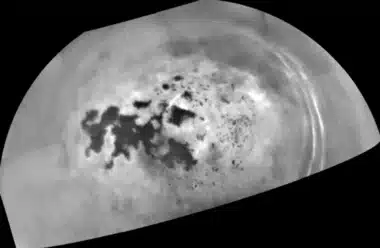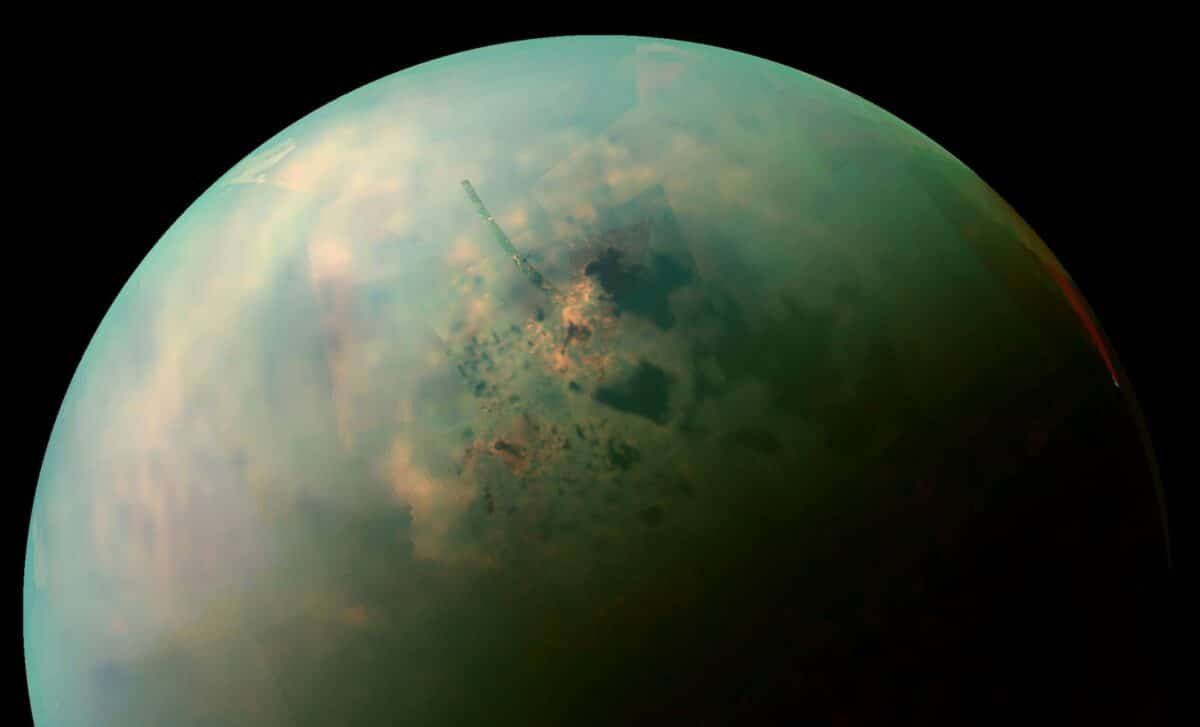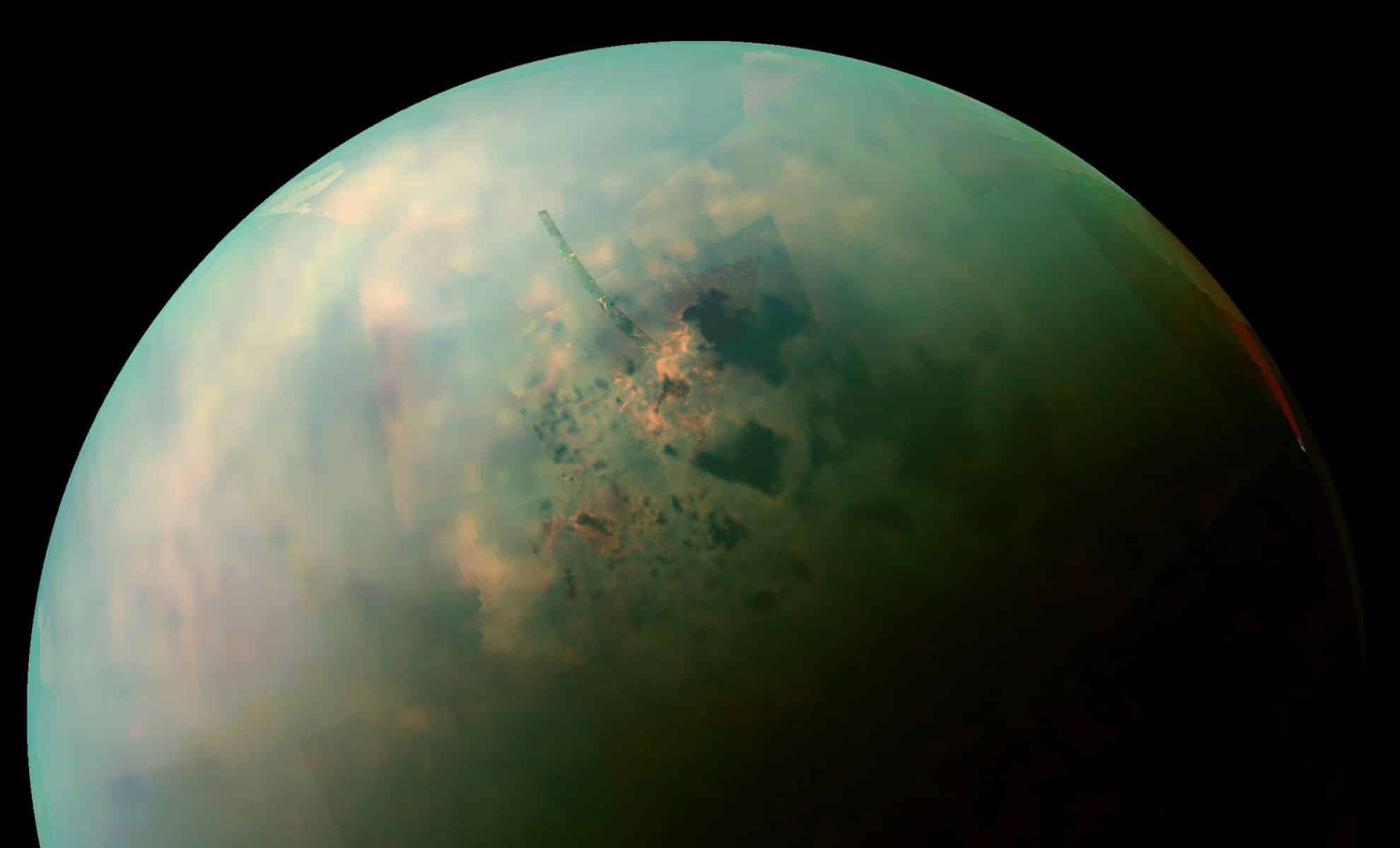Saturn's moon Titan, the only other world in our Solar System with surface liquids, continues to intrigue scientists with its complex and Earth-like features.
Recent studies leveraging data from the Cassini-Huygens mission have provided fresh insights into Titan's enigmatic lakes and seas of liquid hydrocarbons. These findings, derived from bistatic radar experiments, have revealed significant details about the composition and surface activity of Titan's northern seas.
Conflicting Evidence on Titan's Waves
Titan's surface is dotted with lakes and seas of liquid methane and ethane, creating a landscape that bears a resemblance to Earth's early years. The nature of these liquid bodies, particularly the presence and size of waves, has been a contentious topic among scientists. Some research indicated that Titan's waves could erode shorelines, suggesting substantial wave activity.
However, other studies utilizing Cassini's radar data have found that the waves on Titan's seas are minimal, typically measuring only a few millimeters. This discrepancy raises questions about the dynamic processes at play on Titan's surface.
"Using radar observations made by the Cassini mission of Titan’s polar seas, a team led by Dr. Valerio Poggiali of Cornell University found the roughness on Kraken, Ligeia, and Punga Mare was measured in millimeters." This suggests that despite the presence of liquid bodies, the wave activity might be less dramatic than previously thought.
Cassini's Bistatic Radar Experiments
A groundbreaking study led by Valerio Poggiali at Cornell University utilized bistatic radar experiments from Cassini to analyze the composition and roughness of Titan's seas more accurately.
Unlike monostatic radar, which reflects signals back to the spacecraft, bistatic radar sends signals to Earth, providing a more comprehensive dataset. This approach enabled researchers to distinguish between the effects of surface roughness and chemical composition, offering a clearer picture of Titan's liquid bodies.
The study focused on Titan's three largest seas: Kraken Mare, Ligeia Mare, and Punga Mare. The findings revealed that these seas are mostly calm, with surface waves no larger than 3.3 millimeters. However, slightly higher roughness, up to 5.2 millimeters, was detected near coastal areas and estuaries, possibly indicating the presence of tidal currents. Poggiali noted, "The main difference is that the bistatic information is a more complete dataset and is sensitive to both the composition of the reflecting surface and to its roughness."
Composition of Titan's Seas
The research also provided valuable insights into the composition of Titan's seas, showing variations depending on latitude and proximity to rivers and estuaries. For example, the southernmost part of Kraken Mare exhibited the highest dielectric constant, indicating a unique surface composition.

The study suggested that Titan's rivers, primarily composed of methane, flow into ethane-rich seas, creating a mixing pattern similar to Earth's freshwater rivers entering salty oceans. This phenomenon was explained by Poggiali: "We also have indications that the rivers feeding the seas are pure methane until they flow into the open liquid seas, which are more ethane-rich. It's like on Earth, when fresh-water rivers flow into and mix with the salty water of the oceans."
These findings align with meteorological models predicting that Titan's rain is predominantly methane, with trace amounts of ethane and other hydrocarbons. Co-author and professor of astronomy Philip Nicholson elaborated, "This fits nicely with meteorological models for Titan, which predict that the 'rain' that falls from its skies is likely to be almost pure methane, but with trace amounts of ethane and other hydrocarbons."
Future Exploration and Research
The insights from Cassini's radar data represent just the beginning of our understanding of Titan's unique environment. The Dragonfly mission, set to explore Titan further, aims to uncover more about this fascinating moon. Titan's complex meteorology, surface liquids, and potential for prebiotic chemistry make it a prime target for ongoing and future scientific exploration. Poggiali emphasized the potential for future discoveries, stating, "There is a mine of data that still waits to be fully analyzed in ways that should yield more discoveries. This is only the first step."
The study underscores the importance of continued analysis of Cassini's extensive dataset. As researchers delve deeper into this data, they expect to uncover even more about Titan's unique and Earth-like characteristics, offering valuable clues about the early conditions of our own planet. This continuous exploration not only enhances our understanding of Titan but also highlights the need for innovative missions to unlock the secrets of distant worlds in our Solar System.
By understanding Titan's seas and their dynamics, scientists hope to gain insights into the processes that might have shaped early Earth, potentially offering a window into the history of our own planet. The new findings from Cassini's radar data are a significant step in this direction, providing a foundation for future research and exploration of this intriguing moon.




